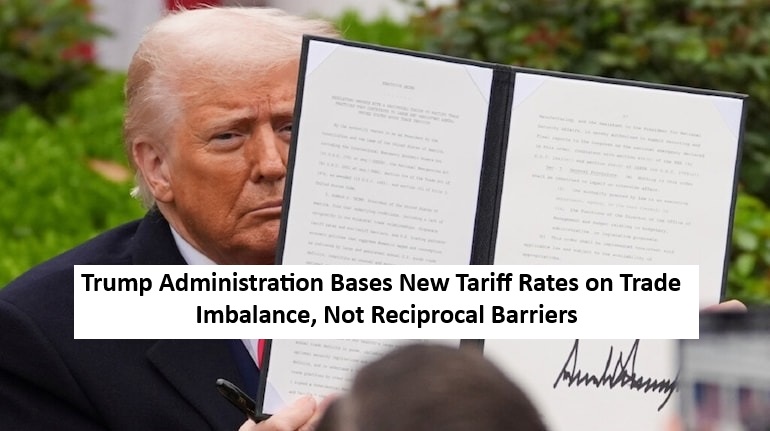
The Trump administration adopted a new formula to calculate tariff rates that relies primarily on trade imbalances instead of matching tariff or trade barrier levels imposed by other nations. This shift marks a departure from the administration's earlier commitment to reciprocal trade measures.
In a statement released by the United States Trade Representative (USTR), the methodology was outlined as follows: a country’s trade surplus with the United States is divided by its total exports to the U.S., with the result halved to determine the final tariff rate. The calculation used trade data from the U.S. Census Bureau for 2024.
Example of the Formula in Action
Using this model, China’s $295 billion trade surplus on $438 billion in total exports to the U.S. produced a surplus-to-export ratio of 68%. Dividing that figure by two gave a 34% tariff rate. Similar calculations were used to determine tariffs for Japan, South Korea, the European Union, and others.
For countries where the U.S. runs a trade surplus or where trade is relatively balanced, a uniform 10% tariff was applied regardless of the trade surplus percentage.
Administration's Goal: Cut Trade Deficits
The USTR acknowledged that while it's technically possible to compute tariff equivalents for each foreign trade policy, the chosen method is a more practical way to address the trade deficit. According to the statement, this approach allows tariffs to reflect the overall impact of foreign trade practices without evaluating each policy individually.
The Trump administration's ultimate objective with this methodology is to reduce or eliminate bilateral trade deficits.
Announcement and Public Confusion
President Trump unveiled the new tariffs during an event at the White House Rose Garden, displaying them on a board showing both “tariffs charged to the USA” and “discounted reciprocal tariff” rates. However, inconsistencies arose between the board and the annex in Trump’s executive order. For example, South Korea's rate was shown as 25% on Trump’s board but 26% in the annex.
Initially, the administration suggested that the tariffs would account for a broader range of factors, including non-tariff barriers, taxes, and currency manipulation. However, the final formula focused solely on trade balances, despite a prior memorandum that called for a more comprehensive analysis of unfair trade practices.
Elasticity Factors Included But Neutralized
Although the formula included two parameters — price elasticity of import demand and elasticity of import prices with respect to tariffs — these were set in a way that they offset each other. This effectively simplified the formula to the trade balance model, multiplying the outcome by one and keeping the focus on surplus ratios.
Read More: World Bank Approves 700 Million Dollars for Pakistan to Boost Economic Stability and Public Services

 Share
Share



